





| Ozyptila of the praticola group (Ozyptila praticola-brevipes (C. L. Koch, 1837 - Hahn, 1826)) |






|
|
Scientific name: Ozyptila praticola-brevipes (C. L. Koch, 1837 - Hahn, 1826) Common name: Ozyptila of the praticola group French name: Ozyptila du groupe praticola Order: Araneae Family: Thomisidae Size: Body size for Ozyptila praticola, males: 2.5-3 mm, females: 3-5.3 mm. Body size for Ozyptila brevipes, males: 2-3 mm, females: 3-4 mm. Biotope: Various habitats except very dry, close to the ground, under moss or stones, sometimes on trunks or low foliage. Web: No web. Observation period: All year round. Geographic area: Holarctic region for Ozyptila praticola and Palaearctic region for Ozyptila brevipes. |
The spiders of the Ozyptila genus differ form those of the Xysticus genus by their smaller size and by a trapeze shape formed by their median eyes which is higher than wide. They bear 2 ventral spines on the fore tibias while spiders of the Xysticus species bear 4. You can recognize Ozyptila praticola and Ozyptila brevipes by the very dark coloured apical tip of their femora. The cephalothorax is blackish brown on the lateral sides with a pale middle band which tapers at the back. The front part of the cephalothorax is slightly elongated. The patterns on the abdomen are rather diffuse. I have read that the sternum is very typical. I have noticed some differences by looking at pictures of both species. I do not know if this can be used as a reliable criteria to tell them apart. Ozyptila praticola has a sternum marked with a dark central band form the first quarter to the rear with rounded peripheral dark spots in front of the six hind legs. Ozyptila brevipes has a sternum marked with a dark central band, appearing as the merge of a central patch with peripheral spots which may by missing at the front, with a dark peripheral area interrupted by thin pale stripes between the legs. Due to this, the dark peripheral spots are more triangle shaped. |
| [To know more about the Ozyptila of the praticola group] [Next picture] [Top] |
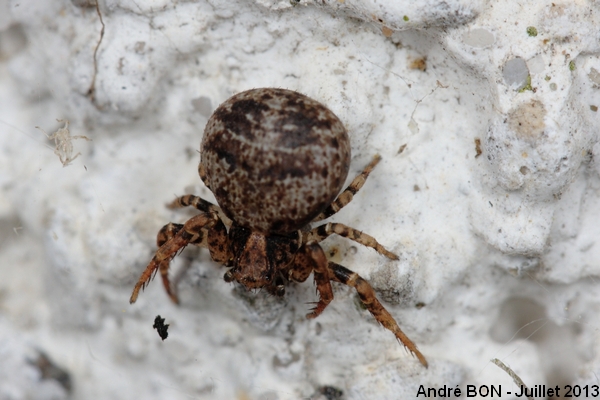
|
I found this small spider on the ground. Its small size and the diffuse pattern on the abdomen made me immediately think to the Ozyptila genus. This is confirmed as we can see the two ventral spines on both fore tibias. |
| [To know more about the Ozyptila of the praticola group] [Next picture] [Previous picture] [Top] |
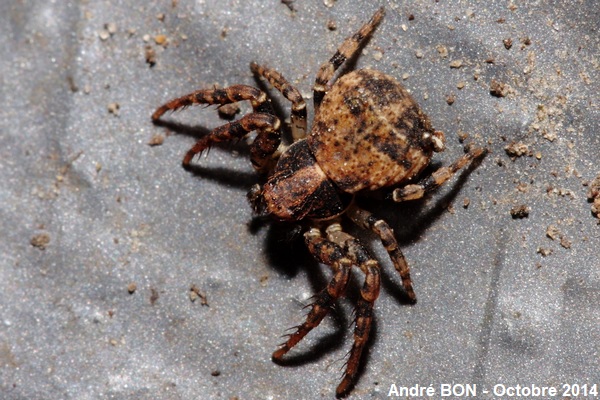
|
You can clearly see the very dark apical tip of the femurs on this picture. |
| [To know more about the Ozyptila of the praticola group] [Next picture] [Previous picture] [Top] |
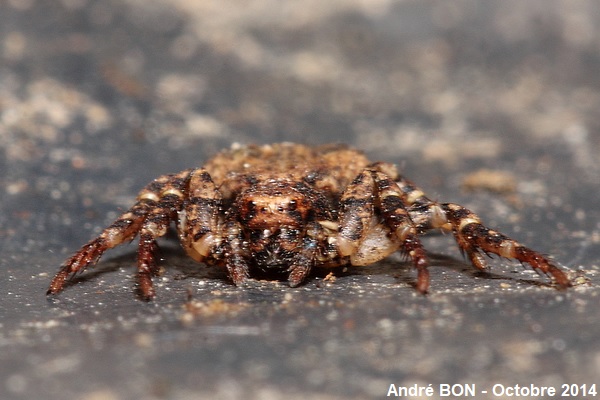
|
I have tried a front close-up picture to have a good view of the eye arrangement but this picture suffers of an important moving blur. I will try to do better next time. |
| [To know more about the Ozyptila of the praticola group] [Next picture] [Previous picture] [Top] |
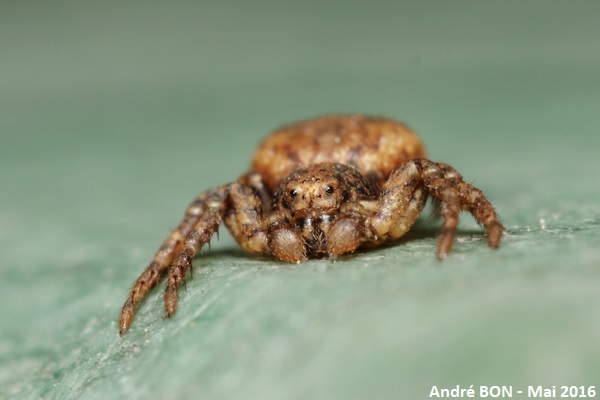
|
We will stay at the genus level for this specimen which does not show any black marking at the apex of the femurs. You can see the eye pattern and the ventral spines of the tibia on this picture. |
| [To know more about the Ozyptila of the praticola group] [Next picture] [Previous picture] [Top] |
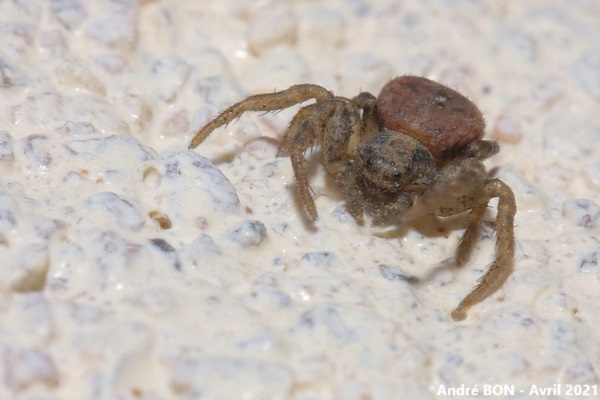
|
It is difficult to say whether this specimen belongs to the praticola-brevipes group with this simple photo. We therefore stick to the genus. |
| [To know more about the Ozyptila of the praticola group] [Previous picture] [Top] |

|
This specimen, with its light coloured legs, does not belong to the praticola-brevipes group but I am not going to create a special page. I am posting it here at least initially. We will see if I make progress in the identifications. |